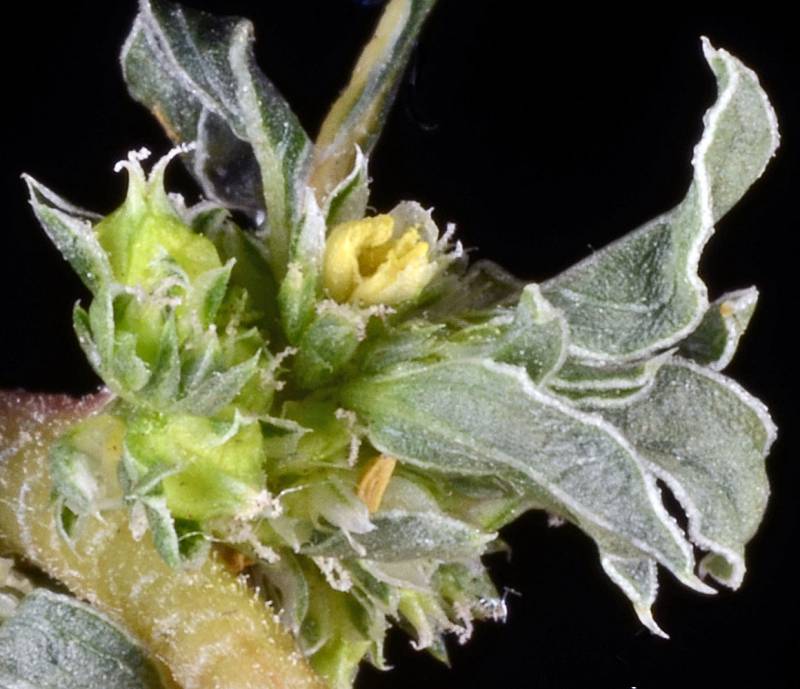Amaranthus palmeri
Amaranthus blitoides
matweed, prostrate pigweed
Leaves alternate, petiole 3-15 mm;
blade generally 10-30 mm long and 4-10 mm broad, obovate to spatulate, base cuneate, apex obtuse, margins entire and flat or slightly wavy.
Inflorescence a cymose axillary cluster, green, 3-flowered;
bracts of pistillate flowers 1, narrowly ovate, somewhat leaflike, 1.5-5 mm, equal to or slightly greater than perianth, apex acute.
Staminate flowers perianth parts 3 or 4, 1.5-2.5 mm, stamens usually 3, filaments free, anthers 4-locular; pistillate flowers tepals 4-5, 1.5-3 mm, narrowly ovate to oblong, unequal, outer 2 greater than others, 2-3 mm, stigmas usually 3 and spreading.
Utricles dehiscing along a fissure encircling the whole fruit, 1.7-2.5 mm and generally equaling tepals, somewhat spheric to obovoid, green or sometimes purple, mostly smooth, slightly wrinkled near tip;
seeds 1.3-1.7 mm, lenticular, black and dull.
Amaranthus palmeri
Amaranthus blitoides
- Local floras:
BC,
CA,
OR,
WA
- Local Web sites:
CalFlora,
CalPhotos,
Flora NW,
PNW Herbaria
WildflowerSearch
iNaturalist (observations)
USDA Plants Database
- LBJ Wildflower Center
- SEINet
- Plants of the World Online
- Encyclopedia of Life
- Wikipedia
- Google Image Search


